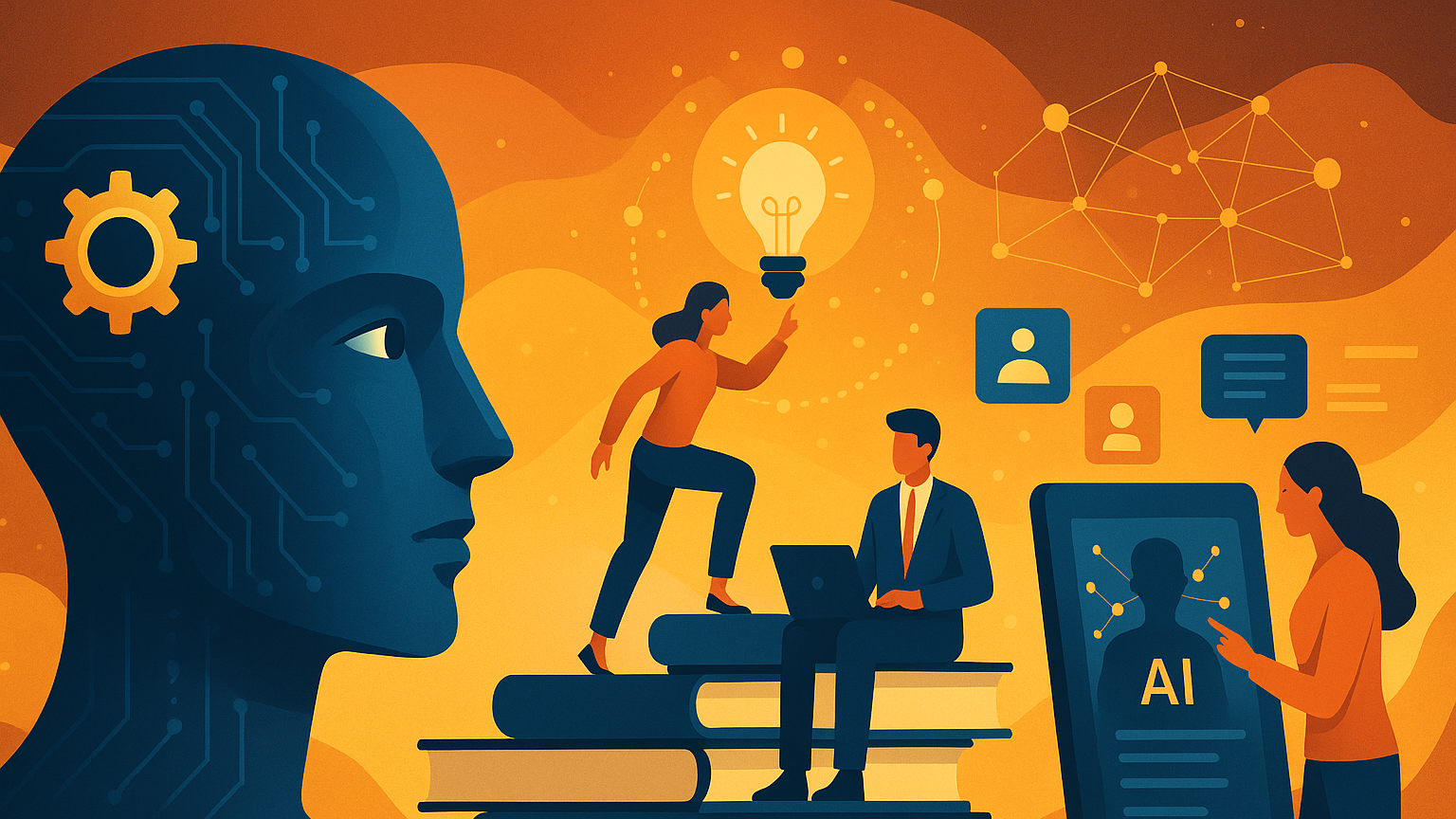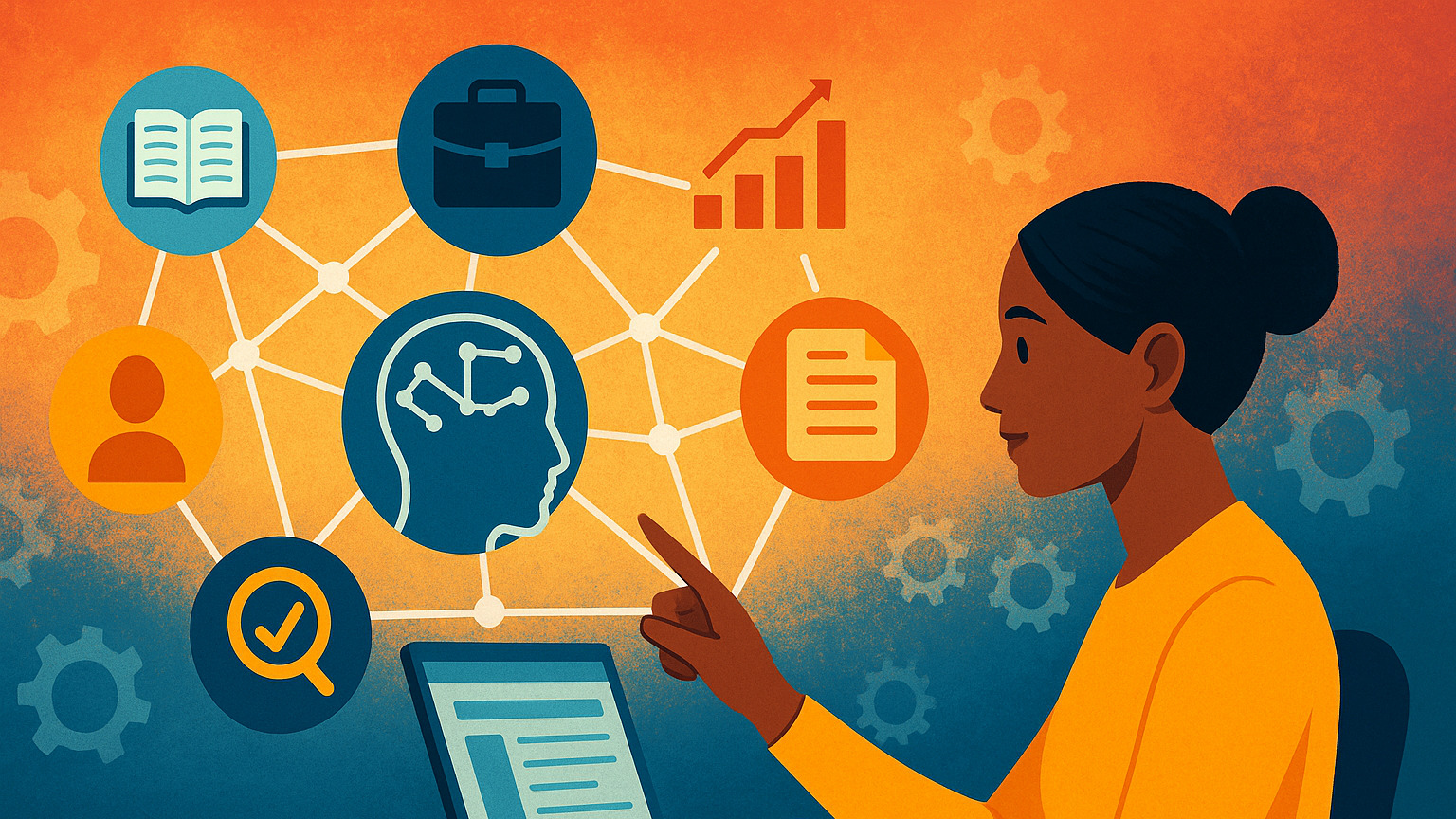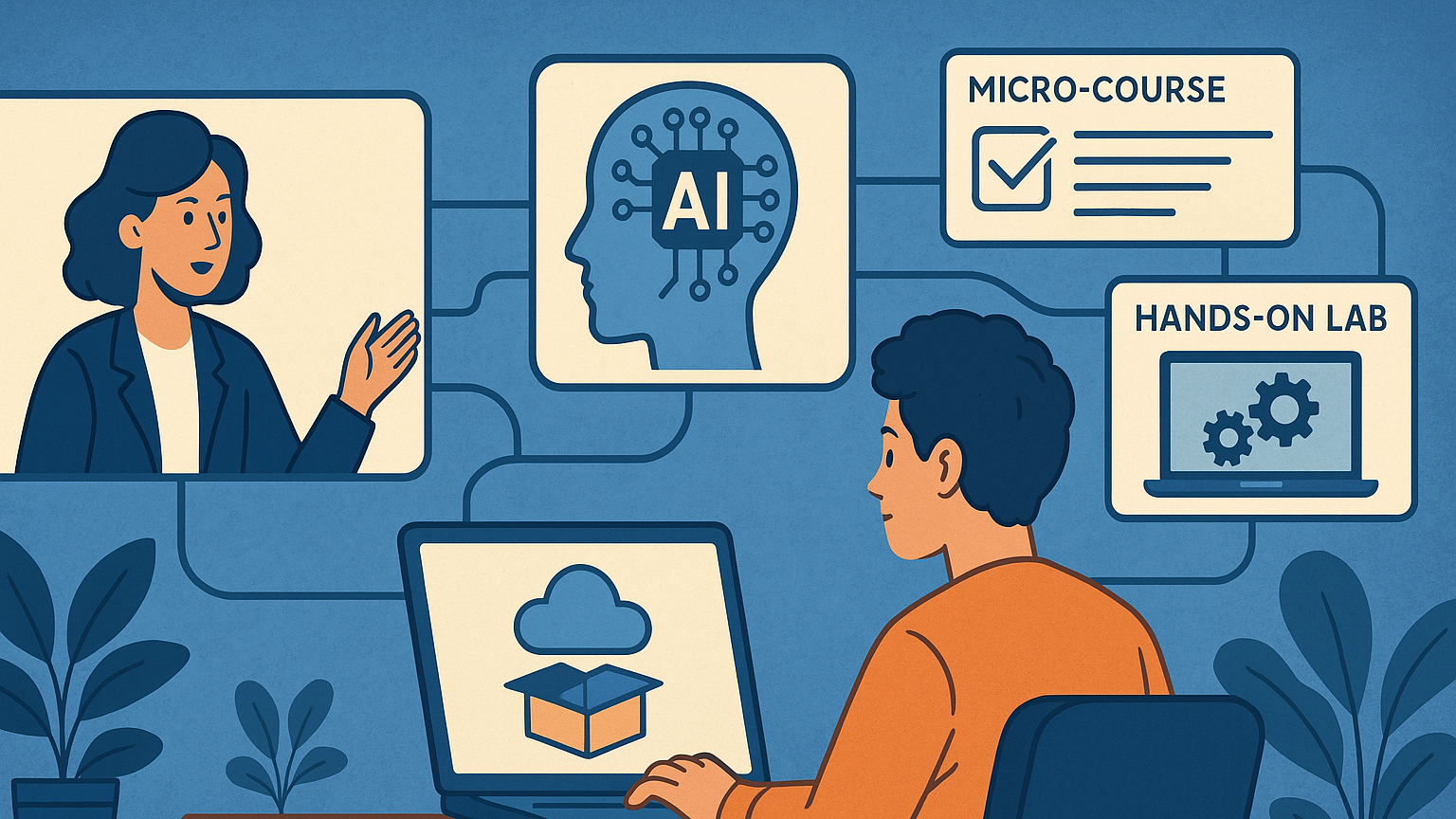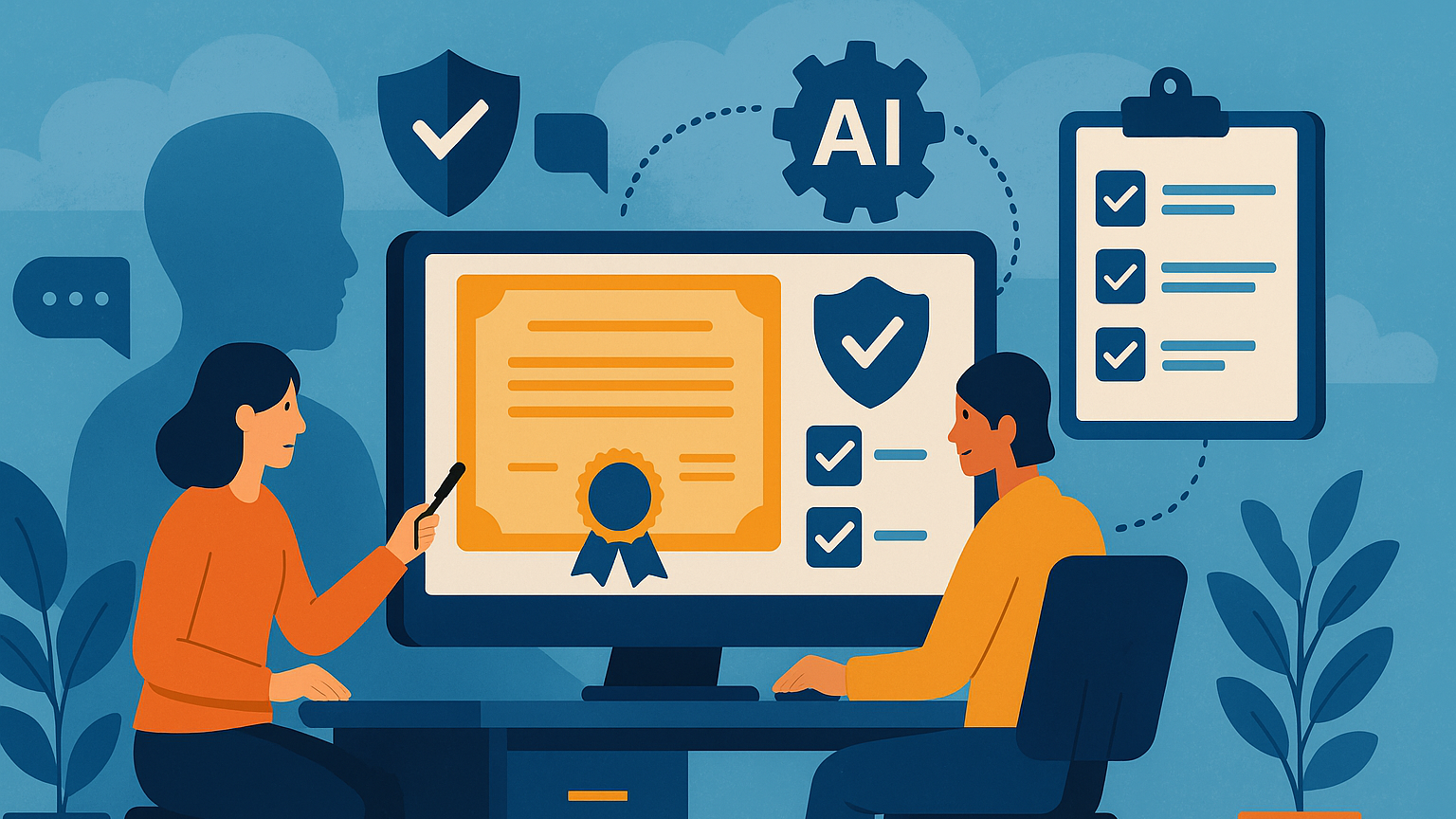
AI in Human Resources for Continuous Learning and Knowledge Management
You’re living and working in a world where knowledge moves faster than ever before. As an HR leader, learning professional, or people manager, you’re expected to not only keep up with changing skills but to create environments where your workforce continuously learns, shares, and applies knowledge. AI is no longer a distant concept — it’s a practical accelerator for continuous learning and knowledge management. In this article you’ll get a clear view of what AI brings to HR, how to design and implement AI-enabled learning systems, what risks to manage, and how to measure success so you can make informed choices and increase productivity across your organization.
Why AI matters in HR for continuous learning and knowledge management
You want your organization to learn faster than competitors and adapt to new markets. AI matters because it removes friction from learning and knowledge discovery, is able to personalize experiences at scale, and uncovers insights from behavioral and performance data that humans can miss. Instead of one-size-fits-all training, AI helps you deliver the right content at the right time to the right person. For knowledge management, AI enables smarter search, automatic tagging, and contextual answers that turn static repositories into living, useful systems. Ultimately, AI transforms HR from a process-oriented function into a strategic driver of workforce capability.
Core AI capabilities relevant to learning and knowledge management
You’ll get the most value when you understand the core AI technologies and how they apply to HR use cases. These capabilities are the building blocks that power modern learning experiences and knowledge systems.
Natural language processing and large language models
You’ll find that natural language processing (NLP) and large language models (LLMs) are central to many HR learning applications. They let systems understand and generate human-like text — enabling conversational agents, automatic summarization of documents, content creation, and semantic search. You can use LLMs to turn lengthy policy manuals into concise briefs, generate quiz questions from course content, or power a chat-based helpdesk that answers employees’ questions in natural language.
Recommendation engines and personalization
Recommendation systems analyze user behavior, role, skill gaps, and performance data to suggest content that’s most likely to help. You’ll see these engines in play when your LMS suggests micro-courses after a task failure or when the knowledge base highlights relevant articles based on the applications someone uses at work. Personalization increases engagement and reduces time-to-competency by aligning learning to each person’s context and needs.
Knowledge graphs and semantic search
Knowledge graphs connect entities — people, skills, projects, documents — to show relationships and provide richer search results. Semantic search goes beyond keyword matching to understand intent and return contextually relevant answers. You’ll notice faster problem resolution and better onboarding when your knowledge system understands that “how to configure payroll API” relates to “payroll integration” and surfaces the correct steps and experts.

Automated content generation and summarization
AI can draft course modules, summarize long documents, and create localized variations. You’ll save time when routine content tasks like updating SOPs, generating training scripts, or producing FAQs are automated. While automation doesn’t replace expert oversight, it accelerates content creation and keeps materials current.
Analytics and predictive modeling
Predictive analytics help you anticipate who might need upskilling, predict course completion likelihood, or identify teams with knowledge gaps that may impact performance. You’ll sharpen workforce planning by using models that link learning interventions to business outcomes, such as reduced error rates or faster product launches.
Chatbots and virtual coaches
Conversational agents and virtual coaches offer on-demand guidance and practice. You’ll deploy these tools for everything from answering policy questions to running role-play simulations for sales reps. They extend human coaching and provide consistent, scalable touchpoints for continuous learning.
Use cases: How AI transforms continuous learning and knowledge management
You’ll get the most traction if you match AI capabilities to concrete HR problems. Here are practical ways AI is changing learning and knowledge management.
Personalized learning pathways
You’ll move away from static curricula and toward dynamic learning paths that adapt as employees progress. AI recommends modules based on prior knowledge, preferred learning styles, and business goals. For example, a software engineer transitioning to a cloud role can receive a personalized sequence of micro-courses, hands-on labs, and mentor recommendations that shorten ramp time and increase confidence.

Just-in-time learning and microlearning
You want learning to be embedded in the flow of work. AI can surface short, targeted content at the moment of need — brief micro-lessons, quick how-tos, or contextual tips in your collaboration tools. This reduces cognitive load and helps employees apply knowledge immediately, improving retention.
Intelligent knowledge bases and search
Your employees shouldn’t waste time sifting through outdated documents. AI-powered knowledge bases provide better search, automated curation, and suggested experts. You’ll see a reduction in repeated questions and faster resolution when people can ask questions conversationally and receive precise answers tied to internal resources.
Onboarding and role-based ramp-up
AI helps you design personalized onboarding journeys based on role, seniority, and team context. You’ll use analytics to track ramp metrics and intervene when someone lags, while chatbots can field routine onboarding questions so human mentors focus on high-impact relationships.
Mentoring, coaching, and performance support
AI can match mentors and mentees, suggest conversation topics, track progress on development goals, and generate coaching prompts based on performance data. You’ll make mentoring programs more effective by removing administrative friction and giving mentors actionable insights to guide conversations.
Succession planning and skills mapping
You need to know who can step into critical roles. AI assists by mapping skills across the organization, identifying high-potential employees, and suggesting tailored development plans. You’ll strengthen succession readiness by combining objective skill assessments with performance and behavioral indicators.
Compliance and certification tracking
Automated tracking ensures employees complete necessary certifications. AI-driven reminders, adaptive assessments, and automated record-keeping make compliance less of a burden on HR while improving audit readiness and decreasing risk.


Designing an AI-powered learning and knowledge strategy
You’ll get better outcomes when AI is part of a deliberate strategy rather than a series of disconnected pilots. Follow a clear framework to align AI investments with workforce objectives.
Define outcomes and metrics
Start by clarifying what you want to achieve: faster onboarding, higher retention, reduced time-to-productivity, better compliance, or improved innovation. You’ll then define measurable KPIs that link learning and knowledge activities to business impact. Clear outcomes guide technology choices and help you prioritize where AI will create the most value.
Map skills and knowledge assets
You need a skills taxonomy and an inventory of content, people expertise, and learning resources. You’ll audit what exists, identify gaps, and tag assets so AI systems can understand and recommend the right materials. This mapping forms the backbone of personalized learning and intelligent search.
Choose the right AI tools and vendors
Not every platform is suitable for your needs. You’ll evaluate vendors for integration capability, model transparency, data governance, and domain expertise. Consider whether you want an embedded AI layer inside an LMS, a best-of-breed knowledge platform, or custom models tailored to your proprietary data. Prioritize platforms that let you retain control of sensitive data and explain recommendations.
Integrate with HRIS, LMS, collaboration platforms
AI only works well when it has context. You’ll integrate your AI systems with HRIS, LMS, performance management, and collaboration tools to pull role data, learning history, and behavioral signals. Those integrations allow AI to recommend relevant actions and learn from outcomes.
Data strategy and governance
You’ll need policies for data quality, access control, retention, and consent. Good governance ensures models are trained on accurate, diverse data and that outputs comply with privacy laws. Establishing clear ownership and processes for data updates prevents stale or biased recommendations.
Pilot, measure, iterate
Start small with a high-impact pilot, measure results, and iterate quickly. You’ll learn more by testing in a controlled environment and expanding once you have measurable gains. Keep stakeholders engaged by sharing interim findings and scaling approaches that demonstrably improve outcomes.
Practical implementation steps for HR leaders
Turning strategy into reality requires practical steps and realistic expectations. Here’s a roadmap you can follow.
Start with use cases that deliver quick wins
Identify use cases that are low-risk, easy to implement, and directly tied to business pain points — for example, improving search in your knowledge base or automating onboarding checklists. You’ll gain buy-in faster when early pilots show measurable improvements in time saved or error reduction.
Engage stakeholders and build cross-functional teams
AI in learning sits at the intersection of HR, IT, L&D, legal, and business units. You’ll build cross-functional teams that include data engineers, learning designers, and legal advisors to ensure successful deployments. Stakeholder involvement prevents surprises and aligns solutions with real-world workflows.
Prepare your data and clean content
AI performance depends on high-quality data. You’ll standardize tags, remove duplicates, and enrich metadata so models can understand and recommend accurately. Invest time in content curation — outdated or poorly organized materials will reduce the effectiveness of AI-driven recommendations.
Train staff and change management
You’ll need to help employees understand how AI tools change workflows and where human judgment remains essential. Offer training, clear documentation, and forums for feedback. Address concerns openly to build trust and reduce resistance.
Scale responsibly
After successful pilots, scale gradually and maintain oversight. You’ll monitor model drift, continue governance practices, and update training materials. Scaling responsibly means balancing speed with safeguards that protect employees and the business.
Measurement and ROI for AI in learning & KM
You’ll need solid metrics to justify investment and to tune programs over time. Both quantitative and qualitative measures matter.
Key performance indicators to track
Track metrics that tie learning and knowledge activities to business outcomes. Typical KPIs include:
- Time to competency or time to productivity for new hires
- Course completion rates and engagement metrics
- Knowledge base search success rate and average resolution time
- Reduction in support tickets or repeated questions
- Employee retention and internal mobility rates
- Business-impact metrics like decreased error rates or faster project delivery
You’ll also include qualitative measures such as user satisfaction scores and manager assessments to capture the human experience.
Make the business case with qualitative and quantitative benefits
When building your ROI model, combine direct savings (reduced training time, fewer helpdesk tickets) with productivity gains (faster problem-solving, improved decision-making) and strategic benefits (faster innovation and better retention). You’ll present a balanced view: immediate operational wins plus longer-term capability improvements that underpin competitive advantage.

Risks, ethics, and governance
You’ll move faster and smarter with AI, but you also must manage several risks proactively. Ethical and governance considerations protect your people and your reputation.
Bias, fairness, and transparency
AI models can perpetuate historical biases in hiring, performance assessment, or learning recommendations. You’ll need to test for disparate impact, ensure training data is diverse, and provide transparency into how recommendations are made. Explainability tools and human review help you detect and correct bias.
Data privacy and security
Employee data is sensitive. You’ll adhere to privacy laws (GDPR, CCPA) and use encryption, access controls, and anonymization where appropriate. Make sure employees understand how their data is used and offer opt-out mechanisms when feasible.
Intellectual property and content ownership
When AI generates training content or summaries, you’ll clarify who owns the generated material and whether any third-party content used in model training is properly licensed. This is particularly important if you use external models that were trained on public data.
Human oversight and accountability
AI should augment, not replace, human judgment. You’ll define decision boundaries where human review is required — for performance assessments, promotion decisions, or sensitive coaching. Establish accountability frameworks that assign responsibility for outcomes.
Best practices and tips
You’ll accelerate success by following real-world best practices that many HR teams have found valuable.
- Start small, focus on measurable problems, and iterate rapidly.
- Keep humans in the loop for sensitive decisions and provide clear escalation paths.
- Maintain a single source of truth for skills and learning records to prevent fragmentation.
- Invest in content hygiene — good metadata, version control, and retire outdated materials.
- Use explainable AI where possible to build trust among stakeholders.
- Encourage a culture of experimentation where employees suggest improvements and report issues.
These practices reduce risk and increase adoption because they make AI systems more reliable, transparent, and aligned with employee needs.
Tools and technologies you’ll encounter
You’ll face a growing ecosystem of tools; picking the right mix depends on your objectives and constraints. Expect to see:
- LMS platforms with embedded AI for personalization and content recommendations
- Knowledge management systems with semantic search and knowledge graphs
- Conversational AI platforms for chatbots and virtual coaches
- Content automation tools that generate, summarize, and localize learning assets
- Analytics platforms and business intelligence tools for learning impact measurement
- Custom or third-party models for specialized tasks, like skills inference or predictive analytics
You’ll choose tools that integrate cleanly with your HRIS and collaboration stack, support data governance, and allow you to maintain control over sensitive information.
Change management and adoption strategies
You’ll only realize AI’s value if people adopt it. Successful adoption hinges on communication, training, and incentives.
- Communicate clearly about what the AI does, why it’s being introduced, and how it benefits employees.
- Provide hands-on training sessions, quick-start guides, and in-app tips so people can experience value quickly.
- Recognize and reward behaviors that align with continuous learning, such as knowledge sharing and mentoring.
- Collect feedback and make visible improvements to show that employee input matters.
You’ll build momentum when users see tangible benefits and feel heard during implementation.
Future trends and what’s next
AI’s impact is just beginning. You’ll likely see several trends shape HR learning and knowledge management in the coming years.
- Multimodal learning experiences that combine text, audio, video, and simulation powered by AI will create richer practice environments.
- AI-driven performance support embedded in workflows will become the default way people learn new tools and procedures.
- Federated learning and on-device models will improve privacy-sensitive applications by keeping data local.
- Advanced skills ontologies and industry-specific knowledge graphs will enable more accurate career pathing and talent mobility.
- Greater regulation and standardization around AI transparency and data handling will push vendors to offer clearer governance features.
You’ll stay competitive by piloting new approaches while keeping a strong governance framework in place.
Case examples you can relate to
You’ll find inspiring real-world examples across industries. For instance, a global financial services firm reduced onboarding time by using an AI-powered learning pathway that tailored content and mentor support based on role and prior experience. A health-tech company deployed a chatbot that answered clinical process questions and decreased helpdesk tickets by 40%. A software company used AI analytics to predict which teams needed targeted upskilling before product releases, preventing costly rework.
These examples show that AI creates measurable value when aligned with operational goals and when implementation includes solid data practices and human oversight.
Common pitfalls and how you’ll avoid them
You’ll run into pitfalls if you treat AI as a magic fix. Common mistakes include poor data quality, ignoring integration needs, underestimating change management, and over-automating sensitive decisions. To avoid these, you’ll invest in content curation, integrate across systems, maintain clear communication with stakeholders, and define human review points for important outcomes. You’ll also monitor models continuously to detect drift and unintended behavior.
Preparing your organization for AI-driven learning
You’ll need to cultivate capabilities beyond technology: data literacy, governance, and a culture that values continuous improvement. Build internal skills in data management, analytics, and AI ethics. Create cross-functional roles that bridge HR and data science. Encourage leaders to model continuous learning and reward knowledge sharing. With these foundations, AI becomes an amplifier of your human-centered learning strategy rather than a standalone project.
Conclusion
You’re at an inflection point where AI can elevate how your organization learns, shares knowledge, and adapts. By understanding core AI capabilities, aligning them to clear outcomes, building good data governance, piloting wisely, and ensuring human oversight, you’ll create learning and knowledge systems that increase productivity and resilience. Start with high-impact use cases, engage stakeholders, and iterate quickly — AI gives you the tools, but your strategy and people create lasting advantage.
If you found this helpful, please clap the article, leave a comment with your questions or experiences, and subscribe to my Medium newsletter for updates on AI in HR, continuous learning, and knowledge management. Your feedback helps shape future content — I’d love to hear how you’re using AI in your organization.
